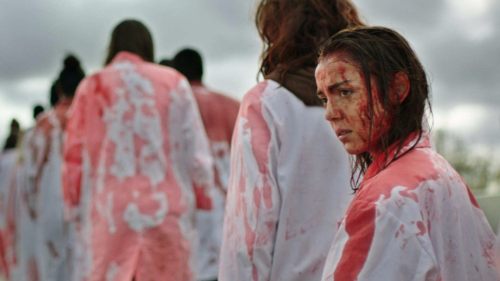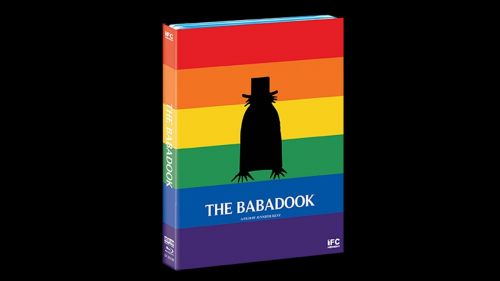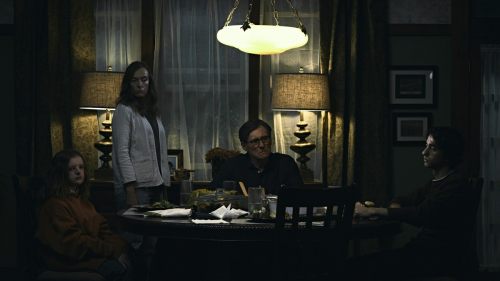Women In Horror: From Scream Queens To Behind The Scenes
Raw is coming (get your tickets here)! In celebration, we are bringing you a bunch of articles inspired by the film.
Historically, the stereotypical female archetype within the horror genre has revolved around sexuality and victimization. The only characters I remember who were not portrayed as typical victims of harassment and torture are Annie Wilkes from Misery and Buffy the Vampire Slayer in all of her bubble gum chewing, valley girl glory. As a result, the thought of a female director completely escaped my mind. However, over the years, women have grown to flip the script and take on more roles behind the scenes. They have unchained raw emotions such as anger, jealousy, revenge, and grief--feelings that society encourages women to suppress (and of course, smile while doing so). More and more, women have stepped up to the plate to direct films that unveil these emotions to enhance character depth. In doing this, female directors apply these traits as strengths instead of weaknesses, and reverse societal pressures in a manner that creates a beautiful storm of viciousness which adds profundity to an otherwise one-dimensional genre.
In Jennifer Kent’s The Babadook, motherly instincts are driven to the brink of madness through a downward spiral of grief after a mother loses her husband the day her son is born. The boogeyman is a central figure, but what many viewers identify with is the horror in losing one’s mind, while trying to raise their child and simultaneously confront the lasting effects of heartbreak and death. These situations that are typically frowned upon in society, are evident in the mother’s conversations with friends and family, in which they are ostracized and judged for how they are coping with their tragedy. Kent surfaces these stigmas and boldly embraces them by combining elements of psychotic hallucinations, aerial and close-up head shots, and a taunting monster to drive home the lack of control and increasing uncertainty that many fear when being a strong parent is most crucial. Struggling with resentment towards her son and frustration with his erratic behavior further supports the exhaustion that mothers can face but feel ashamed to voice. Kent does a superb job at ripping open the internal struggles of motherhood and grief while also addressing childhood fears of losing a parent. The allegory of The Babadook, the film’s barbaric truthfulness, and the moral of how it is possible to live with such darkness can ultimately be credited to Kent’s female perspective.
Writer and Director Ana Lily Amirpour’s hauntingly beautiful film A Girl Walks Home Alone at Night shatters preconceived notions of feminine sexuality and weakness. Walking alone at night is a common fear for females, hence our canister collection of mace and cute pocket-sized knives. Amirpour’s vampire calmly stalks her victims in a manner reminiscent of Michael Myers from the iconic Halloween franchise, but with the emotional gravity and intriguing beauty that is lacking in many well-known horror films. Vampires are regularly over-sexualized (think sultry Selma Hayek seductively dancing with a snake in From Dusk Till Dawn or Brad Pitt with his long, luxurious locks in Interview with the Vampire), but the costume choice of a chador along with her reserved demeanor, evokes a mysterious sexuality that mirrors a stereotype that women are merely physical beings meant to be the object of pleasure. By applying subtle aggression balanced with westernized romance, Amirpour brilliantly throws frustrating female expectations out the window in a unique and empowering manner.
Furthermore, the green-eyed monster known as jealousy, is also viewed as a negative trait. In Karyn Kusama’s The Invitation, tension is taken to new heights by manipulating suspense and paranoia. It is a breath of fresh air for the male protagonist to exude a sense of romantic loss and jealousy, which is known all too well to females. Revisiting old relationships, reliving familial loss, and trying to move forward are struggles that in reality are horrifying to face, but are rarely explored on a deeper level in horror--especially through a male perspective. The climax at the end of the film is another example of how female directors are applying suppressed emotions and calculated aggression. Behind all of the casual dining conversation and smiles, the subdued, questionable behavior captures an uneasy ambiance that far surpasses any standard awkwardness of visiting an ex-lover.
Psychological tension is also evident in Girl through Amirpour’s use of minimal dialogue and intimate scenes where the audience is aware of the anti-hero’s secret, and therefore is also cautiously waiting for opportunistic attacks. Typically, women in film can be viewed as irrational and overly dramatic. However, the characters in Girl and Invitation present a new approach to killers by showcasing a calm, collected, and concealed demeanor. This contrast of internal struggle and outward behavior raises the bar for terror, and pieces together emotion in a pleasurable puzzle that is worth the wait once all hell does indeed break loose and satisfies the thrill to kill.
Joining the ranks is French Director Julia Ducournau’s Raw, which is set to debut this weekend. After a grisly, carnivorous initiation into Veterinary school, the main character develops an unsavory taste for flesh. Breaking the societal norm that women can’t be gory and gruesome, this film has already been well received and appears to be a brutal cinematic treat we can all enjoy.
While horror films have held a steady alternating design of chase scenes and attacks, a new pattern is emerging, which in many ways is due to the increasing number of female directors within the genre. By adding terror with a feminine backbone, characters have become deeper; the audience is more emotionally engaged; and the notion that these reactions occur in real life is ultimately the biggest scare. By facing stigmatized fear head on and creatively applying cathartic characters to unleash what is so often concealed, women are no longer restricted to being the victim both on camera and off.



